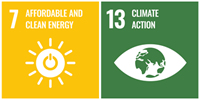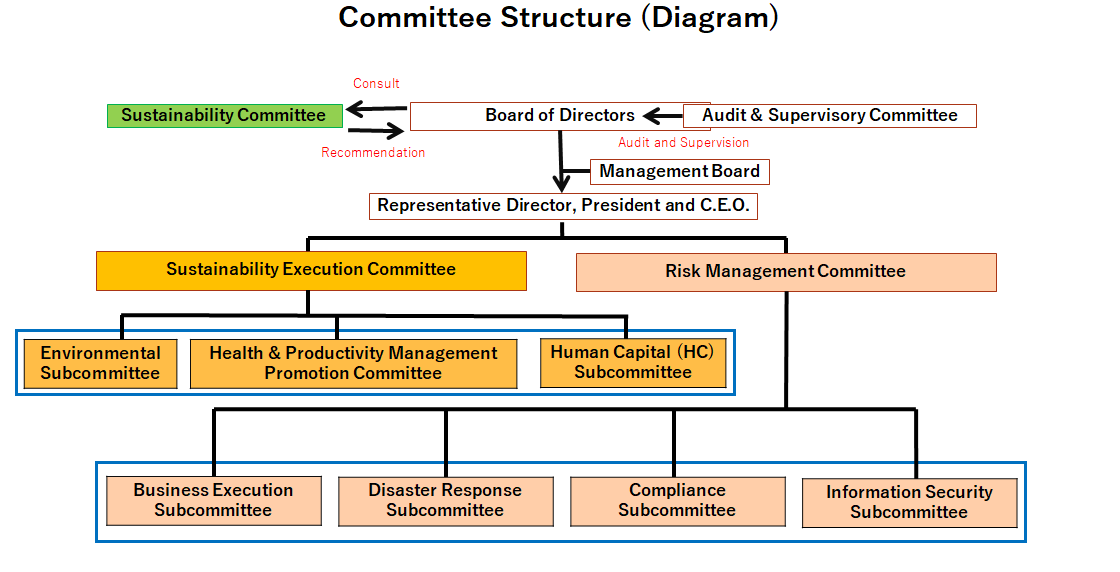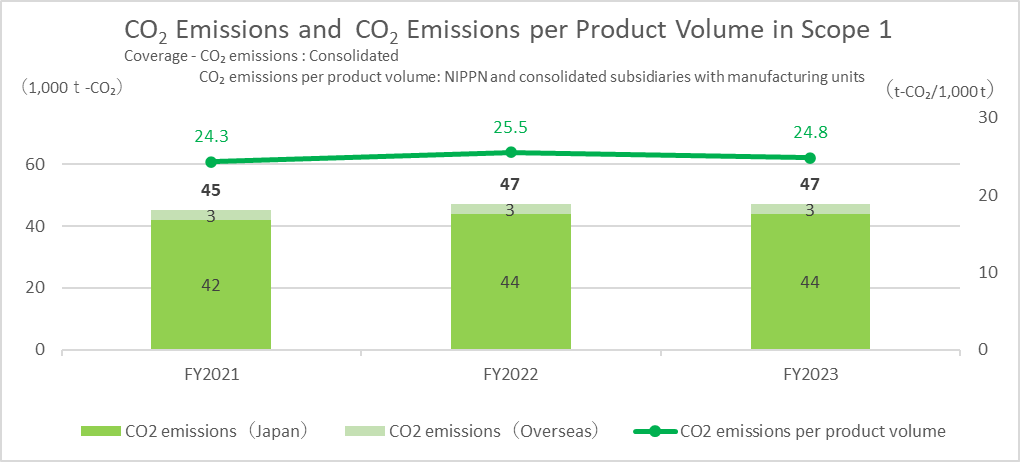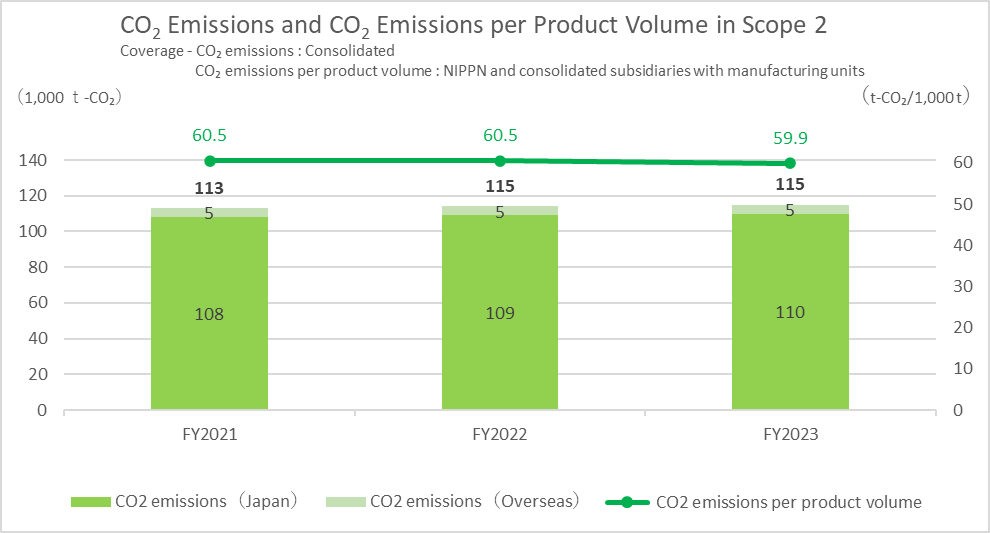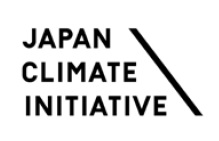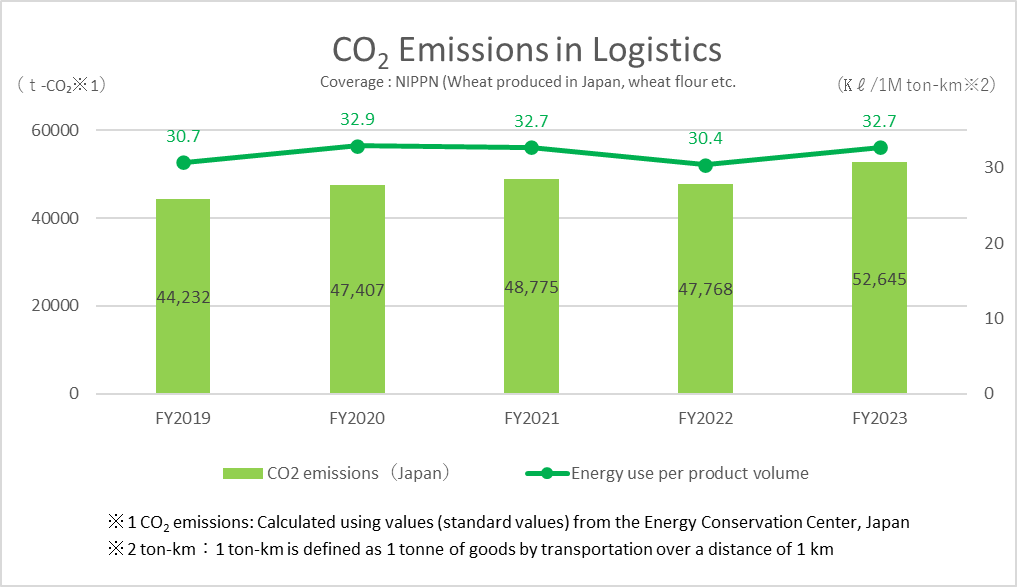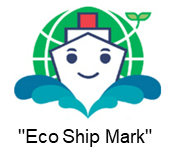Prevention of Global Warming and Low Carbon Society
|
|
Approach to Decarbonized Society
While placing priority on a stable supply of products, our Group is promoting various activities such as the introduction of energy-saving equipment, introduction of photovoltaic power generation equipment, review of our distribution systems and packaging materials used for products, and active development of upcycled products. In addition to capital investment / improvements, we are also internally promoting measures to inform employees of our energy-saving activities.
In February 2024, the Board of Directors approved the response to the TCFD recommendations. We recognize that climate change on a global scale is an issue that could significantly affect the Group's business environment. And, we consider that responding to this issue is our social responsibility.
Response to the TCFD Recommendations
Introduction
The NIPPN Group is engaged in food-related business activities, benefiting from the bounty of the earth. Mindful that our business activities impact the environment, we aim to achieve harmony between people and the environment, and contribute to the realization of a sustainable society.
In February 2023, the Group expressed its support for the recommendations from the TCFD (Task Force on Climate-Related Financial Disclosures), recognizing the importance of assessing business impact related to the risks and opportunities presented by climate change, and developing and implementing measures to address them, in order to continue to create value and achieve a sustainable society through sustainable business activities.
As one of the six key issues (materiality) to be addressed by NIPPN, we have also set "Environmental Protection Initiatives" as the theme of our efforts to contribute to the realization of a sustainable society by reducing the environmental impact of our business activities and thereby achieving harmony between people and the environment.
We have started scenario analysis since 2023, firstly from identifying risks and opportunities in the flour milling business, assessing their significance, and formulating countermeasures. In the future, we will expand the analysis categories and incorporate more specific countermeasures to each climate change risk and opportunities into our management strategies. We will also promote dialogue with our stakeholders to enhance social sustainability and corporate value.
|
|
Governance
The Group regards addressing sustainability issues as a management issue and has established the Sustainability Committee, which is chaired by the Representative Director, President and C.E.O. and includes outside directors with expert knowledge, as an organization that reports directly to the Board of Directors to monitor and control sustainability-related risks and opportunities (the Sustainability Committee meets about twice a year).
The Committee will examine the sustainability of society from various perspectives from a long-term perspective, deliberate on the Group's sustainability direction, materiality, and strategy, including climate change, and issues recommendations to the Board of Directors. In response, the Board of Directors approves the materiality and determines basic strategies based on sustainability.
In addition, we established the Sustainability Execution Committee to identify, evaluate, and manage sustainability-related risks and opportunities, and in addition to the Environmental Subcommittee, we established the Health & Productivity Management Promotion Committee and the Human Capital (HC) Subcommittee in human capital management, which share the same direction as sustainability-related information disclosure, as subordinate organizations of the Sustainability Execution Committee. These committees are responsible for implementing cross-sectional initiatives and are headed by the Representative Director, President and C.E.O.
|
|
Strategy "Scenario Analysis"
The Group has conducted scenario analysis for our flour milling business, which is our core business, for the years 2030 and 2050, assuming a global temperature increase of 1.5℃ and 4℃ in the year 2100 compared to the period of the Industrial Revolution. In addition, we conducted materiality assessment and financial impact assessment by referring to scenarios disclosed by research institutes as shown in the table below.
In addition, we summarized the risks and opportunities identified in the scenario analysis and discussed measures to minimize risks and maximize opportunities.
| Temperature rising range | Transition Scenario | Physical scenario |
|---|---|---|
| IEA "World Energy Outlook 2022" | IPCC "AR5" | |
| 4℃ | STEPS | RCP 8.5/RCP 6.0 |
| 1.5℃ | NZE | RCP 1.9 |
IPCC: Intergovernmental Panel on Climate Change
Strategy "Risks and Opportunities"
We have identified 15 risk items that are assumed to have an impact on the Company.
| Categories | Factors causing risk | Details | Financial impact | |
|---|---|---|---|---|
| Trasition risks | Policies and regulations |
Progressive pricing of GHG emissions
Increased reporting requirements for GHG emissions
|
Increases in the carbon price will result in broad-based increases in costs throughout the supply chain (raw material procurement, manufacturing, logistics, energy, disposal, etc.) | High |
| Reinforcement of energy saving policies | When receiving services (product delivery, contract manufacturing, etc.), costs on the vendor side are passed on to the price and procurement costs increase | High | ||
| Mandatory/regulation for existing products/services | Increased costs for switching to sustainable containers and packaging materials that take into account plastic resource recycling and de-plasticization | Middle | ||
| Oriented to reduce food loss in order to reduce GHG emissions during incineration and disposal, and raw material costs increase due to changes in raw materials, etc. | Low | |||
| Technology | Upfront costs associated with transition to low-carbon technologies | In all business activities, development and capital investment costs will increase in line with the transition to low-carbon technologies | Middle | |
| Failure of investments in new technologies | Failure to develop technology to comply with regulations, resulting in a decrease in sales due to loss of demand for products and services to new technologies developed by other companies | Middle | ||
| Market | Changes in the Energy Mix | Operating costs increase as energy prices rise | High | |
| Rising raw material costs | Increased procurement costs throughout the supply chain for raw materials (wheat, tomatoes, soybeans, corn, buckwheat, etc.) in response to GHG emission reductions | High | ||
| Reputation |
Criticism of the relevant sector
Increased stakeholder unease
|
Stakeholder reputation for inadequate response to climate change (lower corporate value, lower sales, higher financing costs, decline competitiveness due to difficulty in recruiting human resources) | High | |
| Categories | Factors causing risk | Details | Financial impact | |
|---|---|---|---|---|
| Physical risks | Acute |
Increased severity and frequency of extreme weather events such as typhoons and floods
Increased likelihood and severity of wildfires
|
Extreme weather events such as storms, storm surges and droughts become more severe and cause more damage in the supply chain, leading to reduced revenues (lost opportunities), sales guarantees, increased manufacturing/procurement/recovery/logistics costs and increased costs for countermeasures due to suspended operations and difficulties in stable procurement of raw materials | High |
| Chronic | Changes in rainfall patterns, extremes in weather patterns, increases in average temperatures | Severe water shortages adversely affect grain-growing regions and the Group's production sites, leading to increased raw material procurement costs, lower raw material quality and plant and mill shutdowns, resulting in reduced earnings | High | |
| Extreme weather events, such as severe storms, storm surges and droughts, which delay the supply of secondary raw materials used in products, resulting in production delays and reduced sales | High | |||
| Rising temperatures and erratic precipitation cause changes in suitable cultivation areas, resulting in lower crop yields and quality deterioration, which increases raw material prices and production costs. Raw material procurement costs also increase due to changes in procurement routes | High | |||
| Raw material procurement costs increase as a result of reduced crop yields and deteriorating quality due to increased pest and disease damage | High | |||
| Rising average temperatures change consumption behaviour and reduce sales | Low | |||
Strategy "Risks and Opportunities"
Five opportunity items were identified as items that are expected to have an impact on the Company.
| Categories | Factors generating opportunities | Details | Financial impact |
|---|---|---|---|
| Resource efficiency |
Use of efficient means of transport
Efficient production and distribution processes
|
Reduce environmental impact and procurement costs by establishing a logistics material recycling scheme (plastic pallets) and recycling | High |
| Use of recycled materials (recycling) | Reduce environmental impact and procurement costs by establishing a logistics material recycling scheme (plastic pallets) and recycling | Middle | |
| Energy source | Use of new technology | Increased demand for food loss reduction and low carbon products in the supply chain and corresponding sales of our products (environmentally friendly products and services) | Middle |
| Products and services |
Develop and expand low carbon products/services
Development of new products/services through R&D and innovation
Ability to diversify business activities
Changing consumer preferences
|
Growing demand for the Group's PBF (plant-based food) products, which contribute to environmental protection and health, as health needs increase and the values of the SDGs become more widespread | Middle |
| Resilience | Resource substitution/diversification | Diversification of raw material sources reduces costs and reduces the risk of non-procurement, thereby gaining customer confidence and increasing sales | Low |
| Countermeasure | Details | |
|---|---|---|
| ① | Equipment investment for the realisation of a decarbonised society |
Adoption of energy-saving equipment
Installation of photovoltaic power generation equipment
|
| ② | Promotion of product development using low-carbon raw materials and materials |
Switching to recycled pallets
Development of products using alternative raw materials
|
| ③ | Procurement of raw materials using transport methods with low GHG emissions |
Purchasing wheat produced in Japan
Switching to ship transport
|
| ④ | Reducing procurement risks by strengthening the BCP |
Reinforcement of storm surge countermeasures
Ensure water procurement risk assessments
|
Risk Management
We have established the "Sustainability Execution Committee," chaired by the Representative Director, President and C.E.O., to identify, evaluate, and manage sustainability-related risks and opportunities from a multifaceted perspective.
This committee is responsible for the practical examination, realization, etc. of three areas: the Environment including climate change, Health & Productivity Management Promotion , and Human Capital (HC). Each of the three areas reports to and shares a series of status reports with the Representative Director, President and C.E.O., and is conducted under the supervision of the Representative Director, President and C.E.O.
Risks related to climate change are discussed by the "Environmental Subcommittee," a subordinate body of the "Sustainability Execution Committee" and shared with the "Risk Management Committee," which deals with company-wide risks. At a time of growing “VUCA” (volatility, uncertainty, complexity, and ambiguity), with changes happening more rapidly than ever before, companies must be ready to handle unforeseen risks. The Risk Management Committee consists of four subcommittees: Business Execution, Disaster Response, Compliance, and Information Security.
Indicators and Targets
Since FY2018, the Group has been continuously monitoring and managing CO₂ emissions from its business activities (Scope 1 and 2), and will strive to monitor emissions in the supply chain (Scope 3) in the future. In addition, we are in the process of establishing emission reduction targets for Scope 1 and 2.
Although our food business has a relatively low environment impact among manufacturing companies, we believe that "energy use" by our business activities is an issue that needs to be addressed. We will continue our efforts to reduce CO₂ emissions by actively adopting equipment that can reduce energy use, and actively switching to marine freight transportation, which emits less CO₂, for transporting raw materials.
Managing CO₂ Emissions
NIPPN Group believe "energy use" by our business activities is an issue that needs to be addressed, and we are working to reduce CO₂ emissions.
|
|
| FY2021 | FY2022 | FY2023 | ||
|---|---|---|---|---|
|
CO₂ emissions
(1,000t-CO₂)
|
Japan | 42 | 44 | 44 |
| Overseas | 3 | 3 | 3 | |
| Japan and overseas | 45 | 47 | 47 | |
|
CO₂ emissions per poduct volume
(t-CO₂/1,000t)
|
24.3 | 25.5 | 24.8 |
|
|
| FY2021 | FY2022 | FY2023 | ||
|---|---|---|---|---|
|
CO₂ emissions
(1,000t-CO₂)
|
Japan | 108 | 109 | 110 |
| Overseas | 5 | 5 | 5 | |
| Japan and overseas | 113 | 115 | 115 | |
|
CO₂ emissions per poduct volume
(t-CO₂/1,000t)
|
60.5 | 60.5 | 59.9 |
We also calculated CO2 emissions in Scope 3 for FY2023 for our Flour Milling Division.
The calculation is based on the GHG Protocol's "Technical Guidance for Calculating Scope 3 Emissions Supplement to the Corporate Value Chain (Scope 3) Accounting & Reporting Standard" and its evaluation guidelines, as well as the "Basic Guidelines on Accounting for Greenhouse Gas Emissions Throughout the Supply Chain (Ver. 2.5)" of the Ministry of Economy, Trade and Industry (METI) and the Ministry of the Environment (MOE), Trade and Industry.
| Category | Indicators | CO₂ emissions※ | |
|---|---|---|---|
| Upstream | 1 | Purchased goods and services | 3,099.3 thousand t-CO2₂ |
| 4 | Transportation and distribution | ||
| 5 | Waste generated in operations | ||
| 6 | Business travel | ||
| 7 | Employee commute | ||
| Downstream | 9 | Transportation and distribution | 20.9 thousand t-CO₂ |
| 12 | End-of-life treatment of sold products | ||
| Total | 3,120.2 thousand t-CO₂ | ||
| Others | 2 | Capital goods | This category was not included because it is difficult to ascertain the details of the data. |
| 3 | Fuels not included in Scope 1 and 2 | ||
| 8 | Leased assets (Upstream) | ||
| 10 | Processing of sold products | ||
| 11 | Use of sold products | ||
| 13 | Leased assets (Downstream) | ||
| 14 | Franchises | ||
| 15 | Investments | ||
Climate Change Countermeasures
The NIPPN Group considers climate change response as a key management issue. Climate change, which will lead to more severe and increased extreme weather events such as drought and heavy rainfall, is one of the factors that will lead to a decrease in the harvest of wheat, the raw material of our main products. Rising average temperatures will also lead to a decrease in yield and quality of wheat, as well as a risk of higher raw material costs, which may make it more difficult to continue providing consumers with products of stable quality and could largely affect consumers' eating habits. These issues will be addressed as they relate to the Company's credit risk.
Meanwhile, we are using this as a good opportunity to work on new product development, building advanced flour milling technology to maintain the quality of wheat and diversifying our business model by utilizing new ingredients. We will propose new cooking methods and recipes to our customers and consumers, such as baking delicious bread or making noodles even with different grade qualities of wheat flour.
In addition, although our food business has a relatively low environmental impact among manufacturing industries, we believe "energy use" from our business activities is an issue that needs to be addressed. As a countermeasure, we are proactively adopting equipment that can reduce energy use, and we are also actively shifting to marine freight transportation for raw material transportation, which emits less CO₂. We will continue to position our response to climate change as a key issue for our company and promote initiatives to address it.
Introduction of renewable energy equipment
As part of energy-saving measures, photovoltaic power generation equipment has been introduced at Ryugasaki Frozen Food Plant and Isesaki Frozen Food Plant. The operation started in early December 2022 at Ryugasaki Frozen Food Plant, and in early January 2023 at Isesaki Frozen Food Plant. With the introduction of the equipment, the total annual power generation of the two plants is expected to be about 1,000MWh, and CO₂ emissions are expected to be reduced by about 460 tons per year.
We will continue our efforts to further reduce CO₂ emissions with the participation of all employees.
Participation in Outside Initiatives
|
|
Initiatives in Logistics
Reducing CO₂ Emissions
|
|
| Unit | FY2019 | FY2020 | FY2021 | FY2022 | FY2023 | |
|---|---|---|---|---|---|---|
|
CO₂ emissions
(1,000t-CO₂)
|
t-CO₂※1 | 44,232 | 47,407 | 48,775 | 47,768 | 52,645 |
| Energy use per product volume | Kℓ/1M ton-km※2 | 30.7 | 32.9 | 32.7 | 30.4 | 32.7 |
Marine Transportation
Apart from shifting to rail freight transportation, we are also working on shifting to marine freight transportation using ferries. As a result, we have been selected as a certified business operator under the "Eco-Ship Mark Certification System," which certifies that the company contributes to environmental measures through marine transportation.
|
|
Response to the Act on Rational Use and Appropriate Management of Fluorocarbons
Fluorocarbons, which are used as refrigerants in air conditioning and freezing/refrigeration equipment, destroy the ozone layer when released into the atmosphere, and have a greenhouse effect several thousand times greater than CO₂. In April 2015, "Act on Rational Use and Proper Management of Fluorocarbons" came into effect, requiring periodic and simple inspections and reporting of the amount of leaked fluorocarbons.
Our Group picks up target fluorocarbons using equipment at all of domestic business sites, creates a management ledger, and conducts inspections / maintenance according to the equipment capacity. We are working to prevent leakage of fluorocarbons by clarifying the records of equipment from purchase / renewal to disposal and setting self-directed management standards. When a leak of 1,000 tons or more of CO₂ equivalent fluorocarbons occur, we report it in accordance with the Act on Rational Use and Proper Management of Fluorocarbons.

